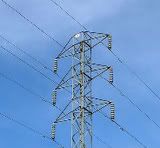Energy Storage for Power Grids – by Guest Blogger Anil – Continued

Compressed Air
Compressed air is an old technology which consumes off peak energy from a power plant or renewable energy to run air compressors. The air compressor pumps-in air into an underground container where it is stored under pressure. In order to generate electricity, the air is released and it powers a turbine. The advantage of underground compressed air storage is that it can be cheaper than batteries and can store many hours worth of energy.
Whether this option would be able to provide full fledged support for energy remains a question. There are only limited compressed air energy storage projects in the world, including one in Alabama and Germany. This alone clarifies that this way of energy storage is not efficient enough or cannot work for a large project.
Even though it is one of the lowest cost and simplest way to energy storage, there are certain concerns about this technology, as pumping compressed air into underground container has certain environmental and safety concerns due to which not many companies are showing interest in this form of energy storage.
Pumped Water
It is the one of the most common energy storage technology used worldwide. This technology makes use of the potential energy of water to spin a turbine to generate electricity. There are about 90 GW of pumped storages in operation, which contribute about 3 percent of worldwide power generation capacity.
If designed efficiently, they are cost effective in long run and hence widespread especially at high altitude geographies such as hills or plateaus. Moreover, it is a way of power generation and storage with the convenience to generate electricity as and when required. This can be compared with modern hydro power plants.
Its use is limited by geography and other availability of adequate amount of water. When people are having less water to drink, use of recycled water for such projects could be a good option.
Ultra Capacitors
Capacitors have been used to store and produce quick energy, rather than for continued existence, the designers need to be overcome the low discharge times of capacitors. There had been some of the new ultra-capacitors which are getting better in the area of storage but it will take some time before this technology becomes main stream of energy storage.
Flywheels
Flywheels are large discs that function on the principle of inertia. They spin in a vacuum and are used as backup power for an uninterrupted power supply (UPS). Flywheels have to face some bottlenecks in reaching mainstream commercialization including technology development, difficulty finding the right market and competition with batteries and other modes of energy storage. Still, flywheels are getting more attention because they are a non-polluting replacement to the natural-gas plants now used to smooth out short-term fluctuations in grid frequency.
Sodium Sulfur (NAS) Batteries
Sodium Sulfur or “NAS” batteries use simple ingredients — liquid sulfur and salt — and have been used in Japan’s power grid for years. There are over 190 sites and 270 MW of stored energy from NAS batteries in Japan. The technology has found a champion in GE which has over 30 patents in this field. The company plans to manufacture sodium based batteries at its plant. However, usage of sulfur in these batteries has raised a concern as the sulfur stored in the battery explodes when it comes in contact with water.
Flow Batteries
Flow batteries are an old technology that helps to convert chemical energy into electricity. Major advantage of a flow battery is the fast recharge time. The technology is an old one but some entrepreneurs see it as an opportunity. Deeya Energy is an example of a new flow battery startup that recently received funding from DOE.
Fuel cells are the best examples of Flow batteries. Though we are yet unable to take the maximum advantage of Fuel cells, they may become good option for energy storage provided designers and engineers are able to overcome its limitations.
Lead Acid Batteries
Lead acid batteries are a mature form of batteries for energy storage. The technology is relatively cheap and widely available. But the chemistry has its barriers, including lower energy density and heavier weight and often high maintenance.
Lithium ion Batteries
It is one of the most advanced forms of batteries. In comparison with the prevalent lead acid technology, lithium allows for faster charging, lighter weight, and higher energy density and is considered to be the moneymaker of the world battery materials market for years to come. But low comparative availability of lithium and expected rising demands due to use in electric cars have forced manufacturers to look for other options like hydrogen cells and recycling of older lithium ion cells to procure lithium.
According to some reports, utilities will need to generate about 40 GW of energy by 2030. In order to provide power to customers, a total investment of as much as US$2 trillion into transmission and distribution networks will be required. This is just the additional power. There will be even more investment in the software, hardware, and wireless networks to facilitate the power grid to manage all the additional capacity.
Generally speaking, energy storage is economical when the marginal cost of electricity generation becomes more than the costs of storing and retrieving the energy plus the price of energy lost in the process. The designers and manufacturers will have to keep in mind how to get the economies of scale with their way of storage of electricity.
It is important to see under the envelope of smart grid projects. The government is distributing the billions in stimulus funds for the project but the entire issue has over-shadowed the need of a smart grid. Do we really need a smart grid?
Is the current grid which has been operating for more than 100 years so dumb to be replaced without being given a fair chance of survival? Let’s think about it!
